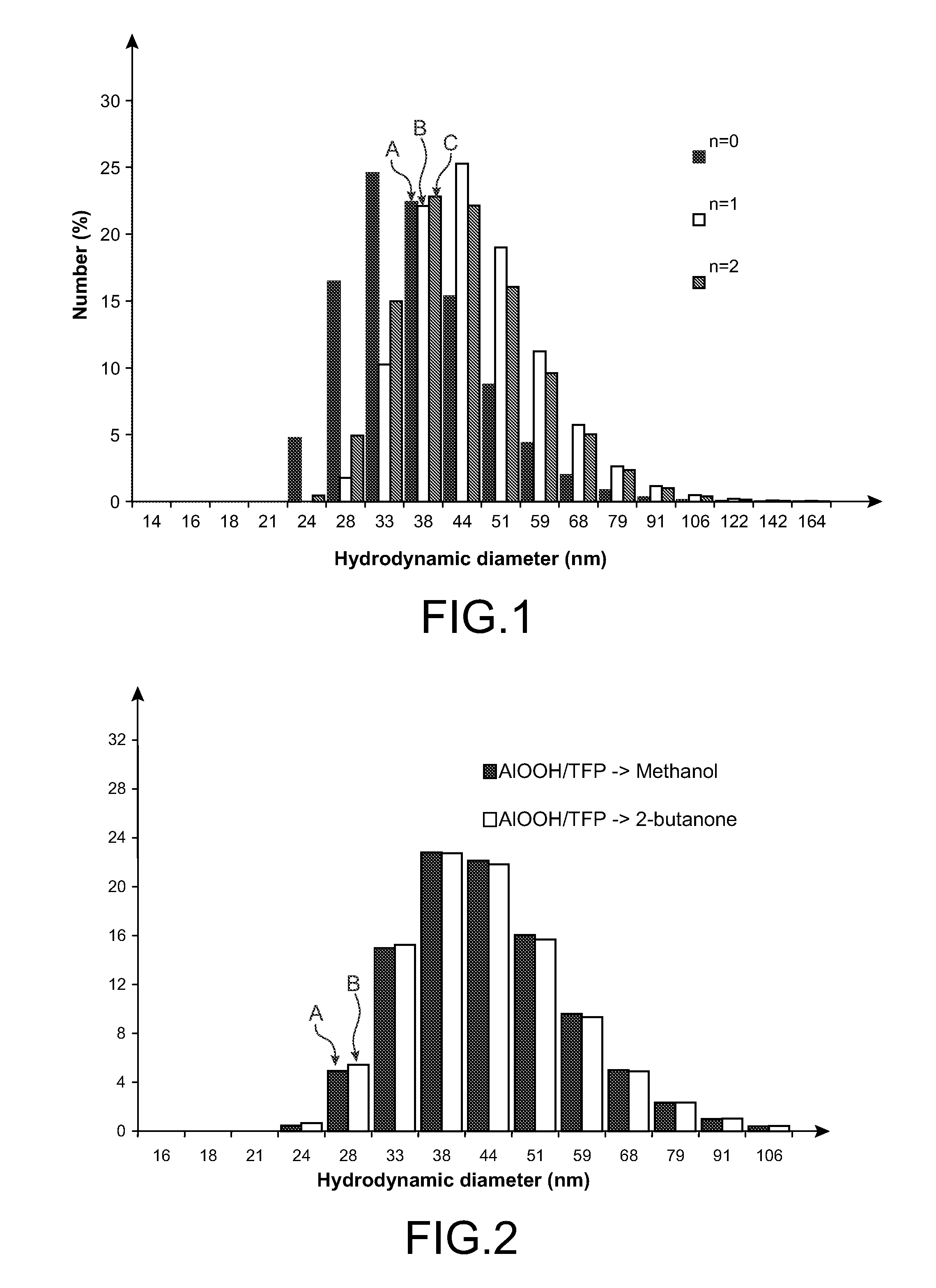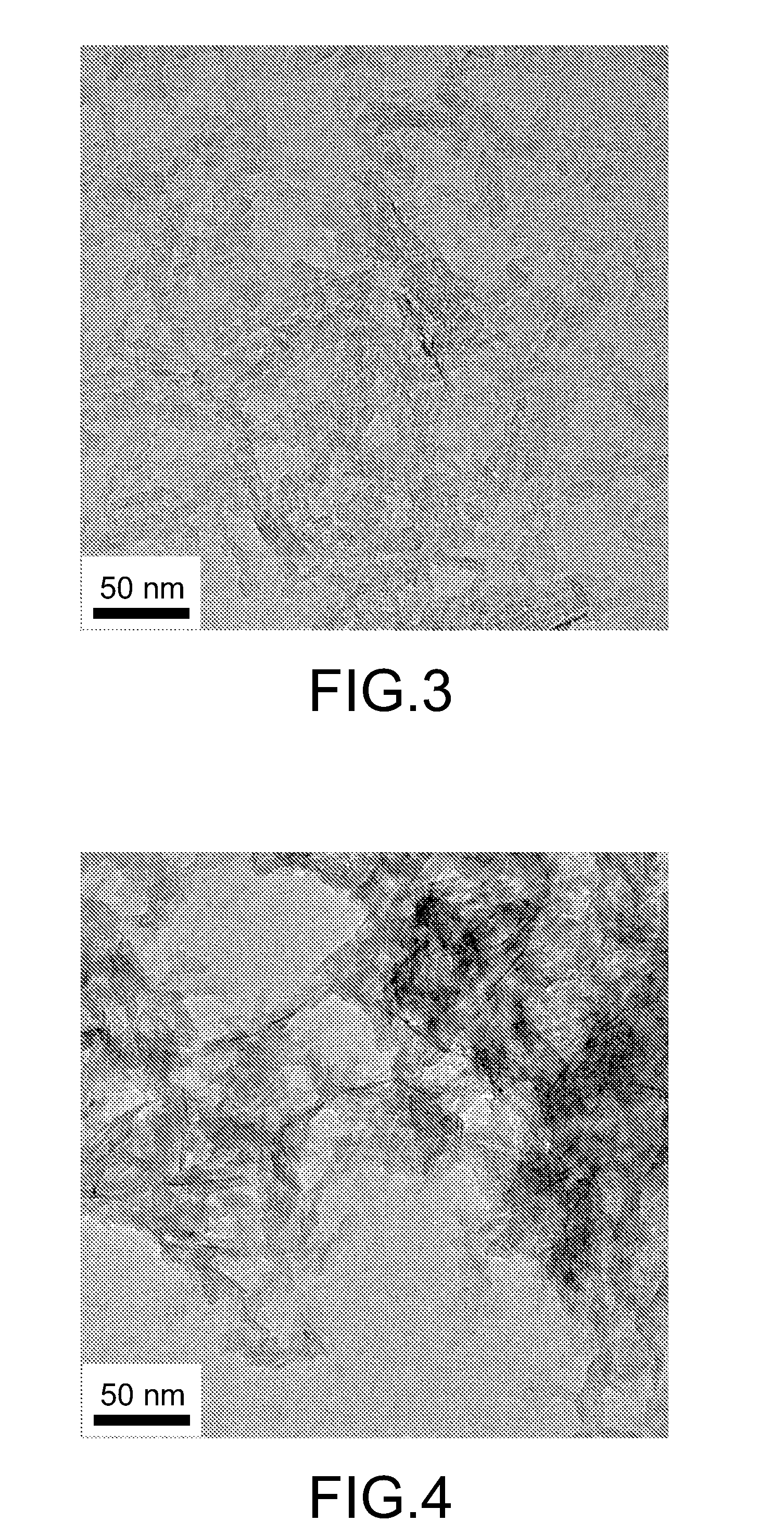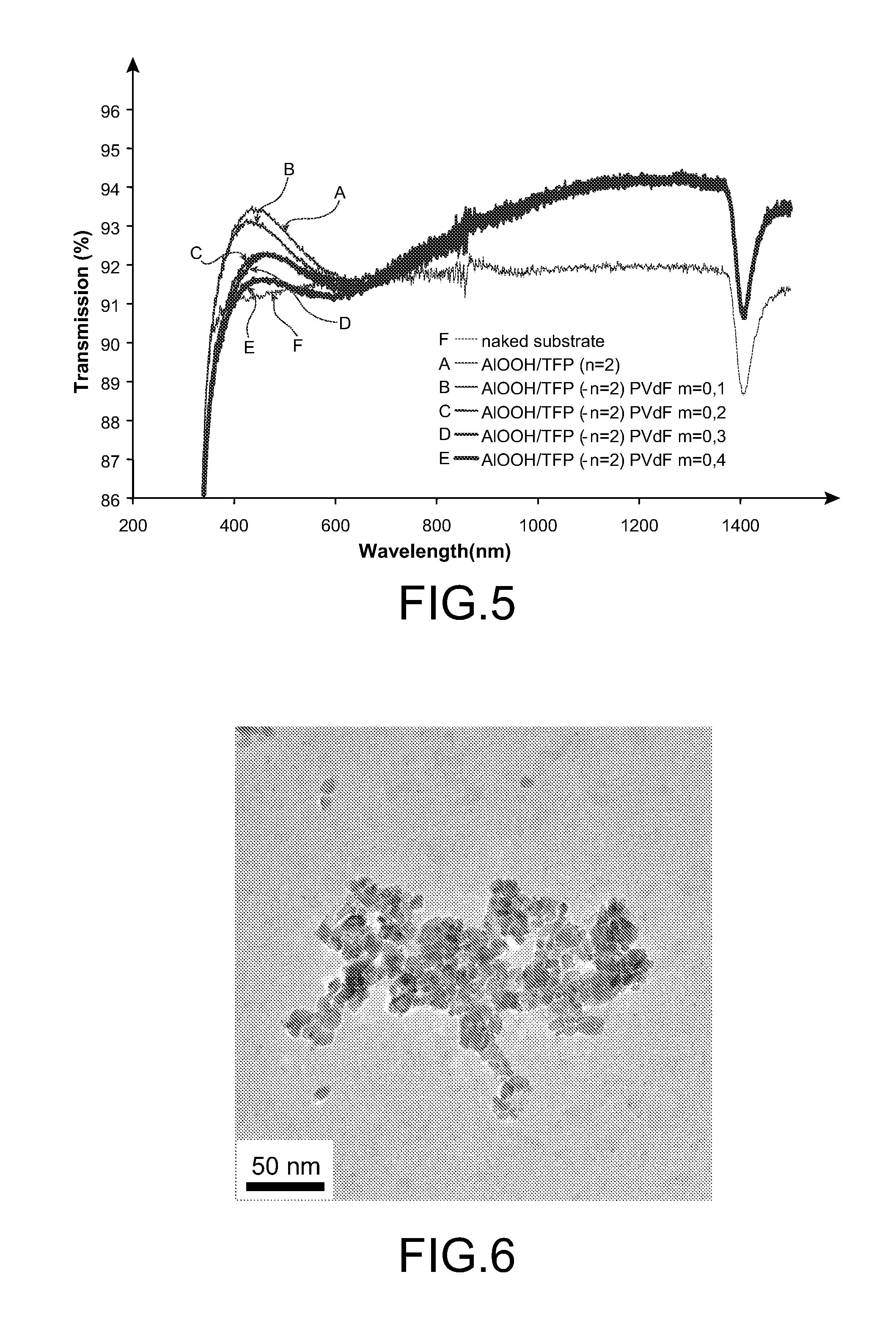Organic-inorganic hybrid material, optical thin layer of this material, optical material comprising same, and process for producing same
a hybrid material and organic technology, applied in the field of organic-inorganic hybrid materials, optical thin layers of this material, optical materials comprising same, and process for producing same, can solve the problems of poor optical quality, incompatibility of use of certain organic polymers with the presence of water, and limited application of the process described in this documen
- Summary
- Abstract
- Description
- Claims
- Application Information
AI Technical Summary
Benefits of technology
Problems solved by technology
Method used
Image
Examples
example 1
[0231]In this example, a thin layer of organic-inorganic hybrid material comprising colloidal nanoparticles of aluminium oxyhydroxide functionalised with 3,3,3-trifluoropropyltrimethoxysilane (TFP) and a PVdF-HFP copolymer is prepared.
[0232]In a first step, a colloidal suspension (1) of aluminium oxyhydroxide (AlOOH) nanoparticles is prepared.
[0233]The AlOOH nanoparticles are synthesized on the basis of the protocol described by Yoldas [16]. Hydrochloric acid (HCl), aluminium sec-butoxide (Al-sBu) and water (H2O) are used in the following molar proportions:
nH2O / nAl-sBu / nHCl=300 / 3 / 0.2.
[0234]The particles synthesized in water are dispersed in methanol by dialysis, until a completely methanolic sol containing 5% by mass of oxide is obtained. The molecular compound (3), the 3,3,3-trifluoropropyltrimethoxysilane (TFP), is then added to the solution (1). The organosilane / oxide molar ratio can be between 0.05 and 5, and more specifically between 1 and 3, for example 2.
[0235]The suspension ...
example 2
[0251]In this example, a thin layer of organic-inorganic hybrid material comprising colloidal nanoparticles of zirconium oxide functionalised with 3,3,3-trifluoropropyltrimethoxysilane (TFP) is prepared.
[0252]In a first step, a colloidal suspension (1) of zirconium oxide nanoparticles is prepared.
[0253]The protocol used for synthesizing ZrO2 nanoparticles is described in reference [17] and the molar proportions used are the following:
nH2O / nZrOCl2 / nurea=100 / 1.2 / 1.4.
[0254]The particles synthesized in water are dispersed in methanol by dialysis, until a completely methanolic sol containing 5% by mass of oxide is obtained. The molecular compound (3), the 3,3,3-trifluoropropyltrimethoxysilane (TFP), is then added to the solution (1). The organosilane / oxide molar ratio can be between 0.05 and 5 and more specifically between 0.1 and 0.5, for example 0.3.
[0255]The transmission electron microscopy photographs of the ZrO2 before grafting of TFP and of the ZrO2-TFP hybrid are represented in FI...
example 3
[0257]In this example, a reflective coating composed of a stack of layers with a high and with a low refractive index is prepared.
[0258]The layer with a low refractive index is based on colloidal silica and the layer with a high refractive index is based on the hybrid material prepared in Example 2.
[0259]The colloidal silica is synthesized on the basis of the protocol described in reference [18], in order to obtain a solution at 1% by mass in ethanol. The organic-inorganic hybrid material is synthesized as described above in Example 2, with zirconium oxide ZrO2 and trifluoropropyltrimethoxysilane (TFP), so as to obtain a hybrid solution at 2% by mass in methanol.
[0260]The refractive index of the hybrid layer was optimised by adding an amount nTFP / nZrO2=0.3, so as to obtain a layer with a refractive index nc=1.70.
[0261]A coating exhibiting 90% reflection at λ=600 nm was obtained by spin-coating using the following stack: substrate / [SiO2 / ZrO2-TFP]6 (6 pairs of SiO2 / ZrO2-TFP layers tha...
PUM
| Property | Measurement | Unit |
|---|---|---|
| Fraction | aaaaa | aaaaa |
| Fraction | aaaaa | aaaaa |
| Fraction | aaaaa | aaaaa |
Abstract
Description
Claims
Application Information
 Login to View More
Login to View More - R&D
- Intellectual Property
- Life Sciences
- Materials
- Tech Scout
- Unparalleled Data Quality
- Higher Quality Content
- 60% Fewer Hallucinations
Browse by: Latest US Patents, China's latest patents, Technical Efficacy Thesaurus, Application Domain, Technology Topic, Popular Technical Reports.
© 2025 PatSnap. All rights reserved.Legal|Privacy policy|Modern Slavery Act Transparency Statement|Sitemap|About US| Contact US: help@patsnap.com



